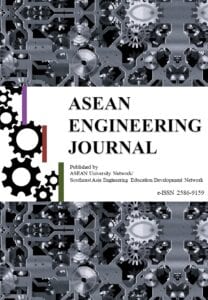ALTERATION, ORE MINERALOGY, AND FLUID INCLUSION MICROTHERMOMETRY OF THE RORAH KADAL QUARTZ VEIN IN CIBALIUNG GOLDFIELD, WESTERN JAVA, INDONESIA
DOI:
https://doi.org/10.11113/aej.v4.15451Abstract
The Rorah Kadal vein is located in the Cibaliung goldfield, Western Java, Indonesia. The vein is hosted by the Miocene Honje Igneous Complex and composed of sequences of basalt-andesite lava flows, volcanic breccia, and overlain by tuff. The paper is tending to describe occurrence, alteration, mineralogy, and fluid inclusion microthermometry of the Rorah Kadal gold-bearing quartz vein to understand the process and formation condition of gold mineralization. The Rorah Kadal is a single vein trending NW direction and about 700 meters parallel to main Cibaliung vein. The alteration consists of illite/smectite mixed layer mineral-adularia-quartz, chlorite-chlorite/smectite mixed layer mineral, and illite-illite/smectite mixed layer mineral-calcite-quartz zones. The vein types are colloform-crustiform band, breccia, vug, cockade, and comb, which are mainly composed of quartz and adularia. Based on quartz textures, three stages of mineralization are recognized: Stage-1 colloform-crustiform; Stage-2 hydrothermal breccia; and Stage 3- late stage quartz veinlet textures. The ore mineralogy of the Rorah Kadal quartz vein is mainly pyrite, chalcopyrite, galena, sphalerite, electrum, and aguilarite. Fluid inclusion temperatures from five drill core quartz samples ranges from 180 to 330 °C, with salinities varying from 1.2 to 4.0 wt% NaCl. The Rorah Kadal vein has slightly high fluid temperature and salinity as compared to Cikoneng and Cibitung veins of the Cibaliung goldfield. This data suggests that the hydrothermal fluids appear to have formed from low temperature and low salinity fluids in near neutral pH environment.
















